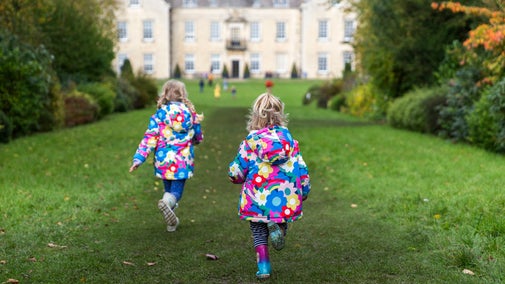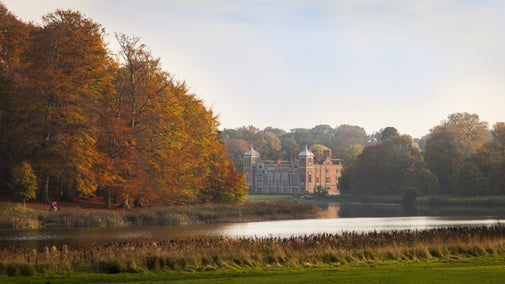
Donate
Everyone needs nature, now more than ever. Donate today and you could help people and nature to thrive at the places we care for.

The Rye’s lush valleys and clear waters have been prized for millennia for their beauty, wildlife and tranquillity. It provides romantic settings for grand landscapes at Duncombe Park, and for us at Nunnington Hall, but its health and natural diversity have been at risk throughout its life. Find out how the Ryevitalise scheme is tackling that.
Many migratory fish species, which need to migrate to reproduce, feed and complete their life cycles, are severely threatened. The main causes are man-made obstacles like dams, weirs and sluices, which disrupt the natural flow of rivers and prevent fish migration.
Migratory fish make up a crucial link in the food chain and play a significant role in healthy and productive river systems. Furthermore, they provide an important food supply and livelihood for millions of people around the world.
The World Fish Migration Day (May 21st) is a one-day global celebration to spread awareness on the importance of open rivers and migratory fish, and is coordinated by the World Fish Migration Foundation.
On this special day, organisations from around the world – including the National Trust at Nunnington Hall – provide open opportunities through a range of activities for people to get involved, offer support and find out more about such an important scheme.

The River Rye and its tributaries rise on the moorland of the North York Moors, flowing through fast and clear upland becks that carve out steep-sided dales until the land flattens and the river slows and broadens, taking on the character of the undulating Howardian Hills and flat lowlands of the Vale of Pickering.
Once a lifeblood for communities, providing water and power, this connection to the river is being lost.
‘Ryevitalise’ is a £2.8 million Landscape Partnership Scheme inspired by local communities and supported by the National Lottery through the Heritage Lottery Fund, as well as by North York Moors National Park Authority and partners.
The scheme aims to revitalise the Rye’s natural and cultural heritage, reconnecting people to the river, the history and wildlife of the area, and supporting the regeneration of the landscape through an exciting mix of projects.

Examples of specific areas of interest include:
• Identifying priority high-value habitats for restoration and expansion, combating invasive species and creating habitat corridors that allow wildlife to roam without obstacle.
• Developing a deeper understanding of our rare and important species, such as the Alcathoe bat and the white-clawed crayfish (pictured above).
• Restoring the Rye’s ancient woodland.
• Improving water quality by supporting work to reduce pollution.
• Providing a diverse range of community engagement and education initiatives to schools and outreach groups, including a Ryevitalise Ranger initiative and the opportunity to take part in ‘citizen science’ research projects to undertake species and habitat surveys.
The team look forward to meeting with and talking to as many people as possible, ensuring the project incorporates a vast wealth of local knowledge and ideas.
For further information, visit the Ryevitalise project page on the North York Moors website.

Everyone needs nature, now more than ever. Donate today and you could help people and nature to thrive at the places we care for.

Inspiring, leading and resourcing the UK’s heritage to create positive and lasting change for people and communities, now and in the future.
A dwelling is recorded here since 1249, but the current house grew out of a Tudor Hall. Over 450 years the house has been altered to create an atmospheric and comfortable home.

The garden at Nunnington Hall is the perfect place to enjoy some peace and quiet. Peaceful hidden spots, colourful peacocks and colourful flowers offer a great day out.

Discover how the conservation team at Nunnington care for the numerous items in our collections, and find out how we deal with certain unwelcome insect visitors to the Hall

Read about the new research into the 19th-century owners of Nunnington Hall which helped us to trace the source of some of their wealth accumulated as derived from the slave trade

There's plenty for all of the family to do on a visit to Nunnington Hall. From art exhibitions to games, crafts and more, including our Lion's Den play area.

Find out more about the funding the National Trust receives from grants, and the projects it has helped support.

We believe that nature, beauty and history are for everyone. That’s why we’re supporting wildlife, protecting historic sites and more. Find out about our work.
